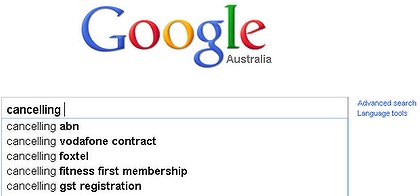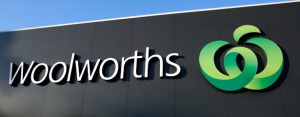 In Australia there are many types of businesses: small, medium and large. In Australia, large businesses account for approximately 3 per cent of all business enterprises. The Australian Bureau of Statistics refers to large businesses as ‘those employing 200 or more people’. More than 80 per cent of all people currently in work are employed in large businesses. The largest employer being Woolworths Ltd with 94 408 employees.
In Australia there are many types of businesses: small, medium and large. In Australia, large businesses account for approximately 3 per cent of all business enterprises. The Australian Bureau of Statistics refers to large businesses as ‘those employing 200 or more people’. More than 80 per cent of all people currently in work are employed in large businesses. The largest employer being Woolworths Ltd with 94 408 employees.
Businesses do not operate in isolation to the economy and economic changes can have a major impact on the business environment. The current state of the economy can have a major impact on the business environment. Economic conditions impacting on business can be measured by indicators such as:
- the inflation rate as indicated by the Consumer Price Index (CPI)
- the level of unemployment
- consumer confidence and consumer spending
- interest rates and the level of borrowings
- wage rates and awards
- business investment and business confidence
- foreign exchange rates and the value of the Australian dollar
Fluctuations in these indicators can have a major impact on business. The global economic crisis of 2008-09 had a major impact on business confidence. Many businesses had to lay of staff or scale back operations because of uncertain economic conditions.
Contribution of business to the economy
Large businesses make a significant contribution to the Australian economy. Because of their size, large businesses are efficient producers of goods and services. In fact, according to recent statistics, large businesses contribute 56 percent of total revenues in Australia. Large businesses also play the following important roles:
Provision of employment
Large business requires significant numbers of employees, and employ around 33% of the Australian workforce. Australia’s largest employers (Woolworths and Coles) each employ more than 94,000 employees. Employment levels such as this help to create and maintain jobs in economy. Consequently this means less unemployment and more income for the economy; demand for goods and services goes up; and spending is increased, resulting in more employment in the production of goods and services.
Economies of scale and high levels of production
Large businesses are able to produce significant quantities of goods at reduced cost. Economies of scale are achieved; large organisations incurr lower costs per unit of output because they operate on a large scale. Consequently, lower costs in production should result in lower prices for the consumer.
Economies of scale also lead to higher and more efficient levels of production. In fact, large-scale account for about 70 per cent of all the goods and services produced by the private sector. This level of production makes up a considerable part of Australia’s gross domestic product (GDP). GDP is a measure of all the goods and services produced in the economy in one year. On average, large-scale organisations contributed over 55 per cent of Australia’s GDP.
Improvements to Australia’s industrial base
Large businesses help provide a solid industrial base in Australia by stimulating the growth of capital infrastructure. Large businesses, particularly transnational corporations, are large investors in equipment, machinery and state-of-the-art technology. Most large businesses are also concerned about developing world’s best practice in their particular industry. This means that they are continuously trying to improve what they do so that they can be a world leader in their particular industry.
Research, development and innovation
In the competitive search for better products and to develop world’s best practice, large-scale organisations invest in research and development (R&D). Investment in R&D will not only help to develop better products and improved methods of production, it will have flow-on effects throughout industry and society. For example R&D by Telstra into communications technology could lead to improved communication systems for society in general.
Innovation means doing things in new and better ways, developing novel and clever solutions to problems, using the skills and technologies of the future and overcoming barriers to improvement. Innovation is an important ingredient for success in all types and sizes of business. It is needed to take advantage of business opportunities and to solve problems. For example, in the communications industry 3G networks have allowed customers to access the Internet on a mobile phone handset.
Export earnings
Australia has traditionally been a large exporter of primary products and has had to rely on imported goods. However, in more recent times the Australian government has encouraged Australian industries to develop their own export markets. Australian exports help to earn foreign income for Australian businesses. The export of Australian manufactured goods has increased in recent years. This is important for Australia’s future because it helps retain employment in Australia, while earning valuable foreign income at the same time.








